Simple and delicious onion chutney recipe (vengaya chutney recipe) without tomatoes and coconut! This South Indian style onion chutney is a great side dish for idli, dosa and even pairs well with rice!
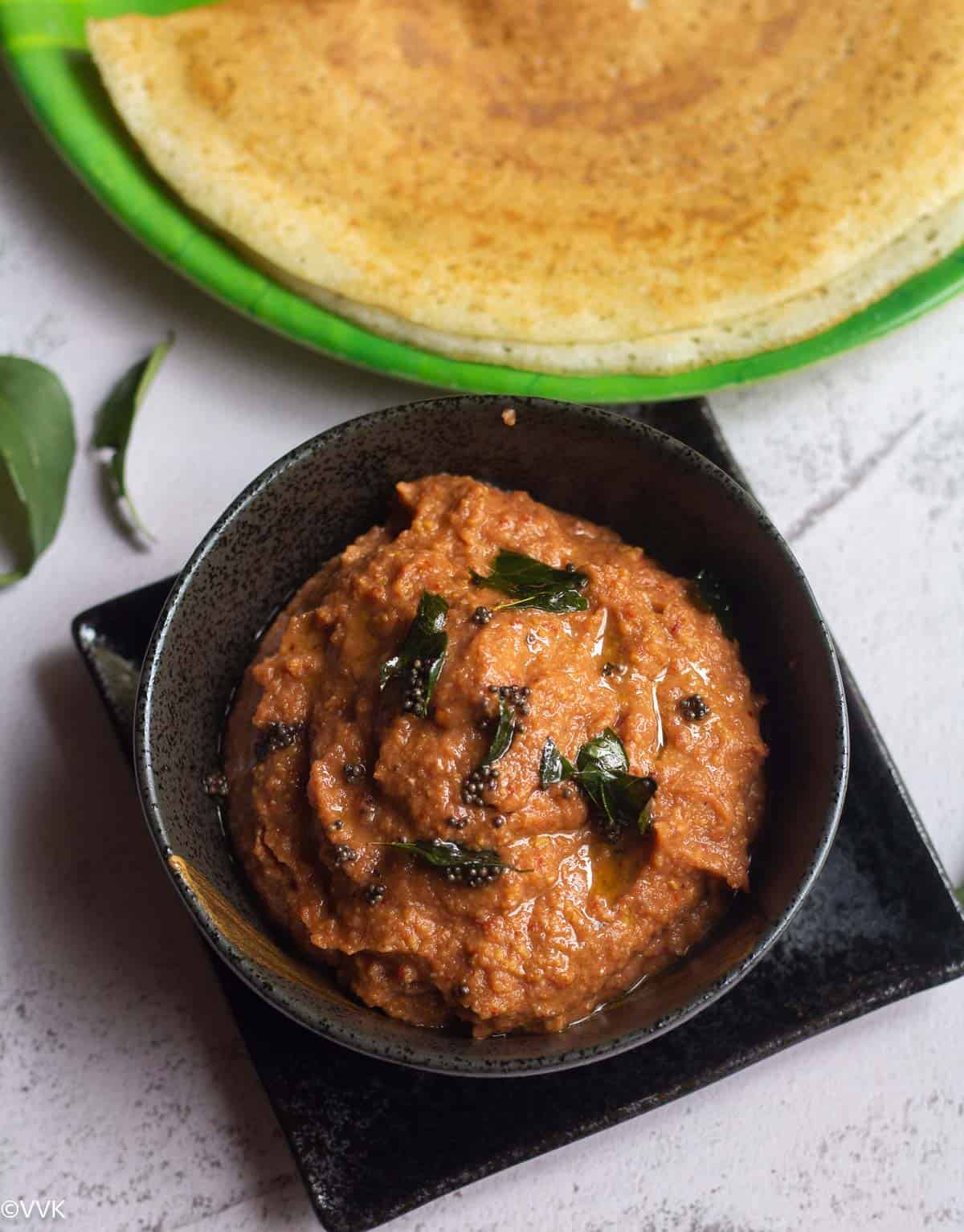
The assorted side dishes that we make for idli and dosa make them exciting. Don’t you agree? While I love my idli and dosa with coconut chutney and sambar, I love it with other sides like kadappa, kurma, and other assorted chutneys. And this red onion chutney is one such recipe.
Vengayam in Tamil means onion, and it’s popularly known as vengaya chutney in Tamil. It’s very similar to kaara(spicy) chutney but sans tomatoes.
Jump to:
This onion chutney recipe is straightforward, and it’s the traditional South Indian style chutney with lentils. And guess what? The shelf life of this chutney is longer than a coconut chutney’s shelf life. I usually refrigerate it for 3 to 4 days.
For longer shelf life and travel purposes, you can saute the chutney again after grinding it. I have explained that in my tomato chutney recipe. You can also refer to that post.
Now let’s get straight into the ingredients and the procedure.
Ingredients required
Here are the main ingredients that we need for making this onion chutney.
Onions and garlic – The key ingredients in the chutney. I have used two red onions, approximately 200 grams, and two garlic cloves, approximately 10 grams. Garlic is optional, but it adds flavor here. You can use yellow or white onions as well, but that changes the color of the chutney.
Lentils – I have used an equal amount of urad dal and chana dal. Adding lentils makes the chutney slightly thick. As we love this chutney with rice, I always add both the lentils. You can reduce the amount or use only urad dal if you prefer thin consistency chutney.
Chilies – I used regular dried red chilies and Kashmiri red chili for the color. You can use either one and adjust the amount to taste.
Tamarind- It adds a nice tangy flavor to the chutney. I used ½ tsp of my homemade tamarind paste. If you use tamarind flesh/pulp, use a small 1 to 1.5-inch piece or small marble-sized tamarind. Saute it along with the onion so that it gets softened.
Tempering ingredients – I kept my tempering ingredients simple and went with mustard seeds and curry leaves. If you can’t source curry leaves, please skip it.
Apart from these ingredients, you need oil(to saute the onions and temper), salt, asafoetida, and water.
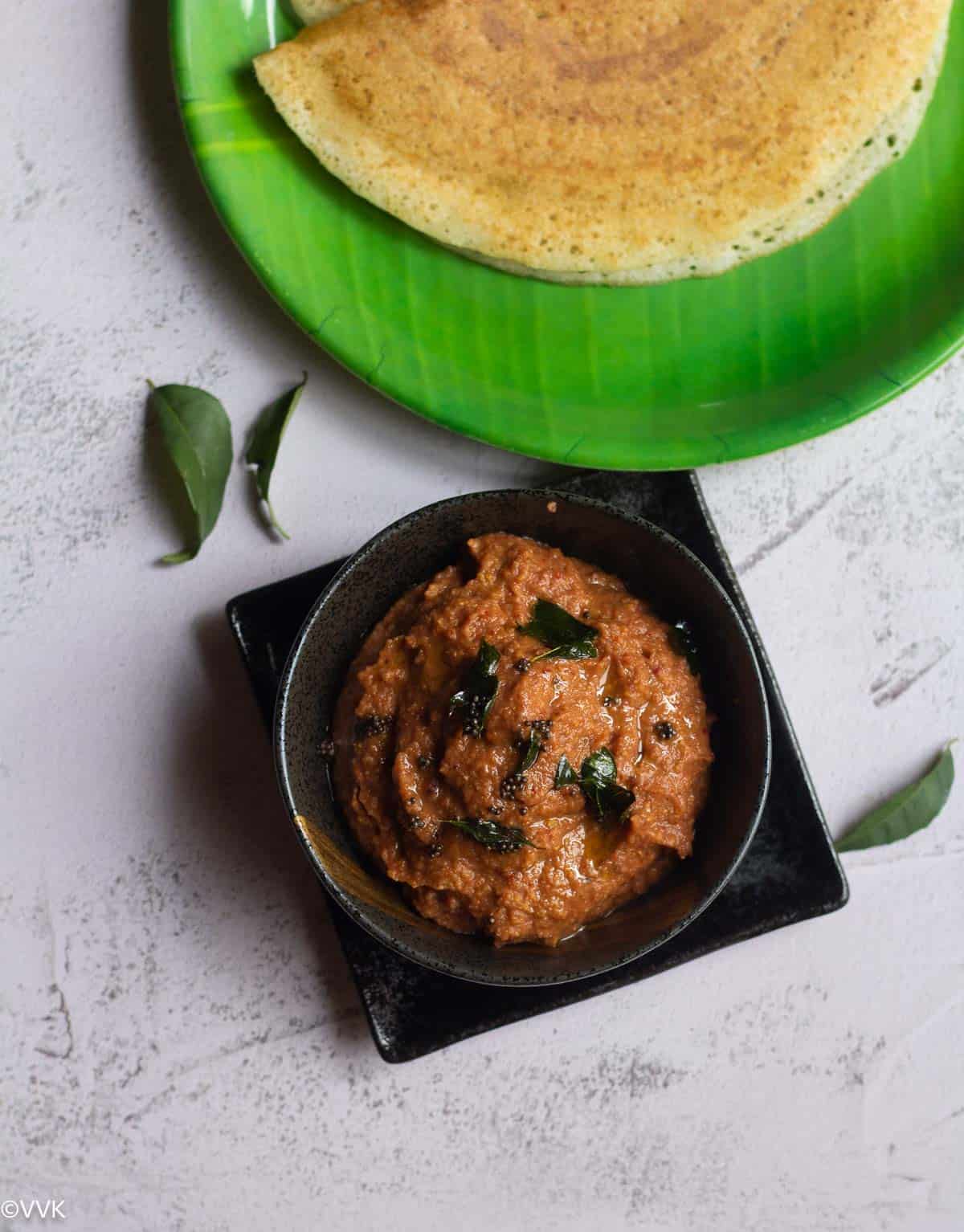
Dietary specifications and serving suggestions
As you can see, this chutney is vegan and nut-free naturally. Use gluten-free asafoetida or skip asafoetida for a gluten-free version.
You can serve this chutney with idli, dosa, roti (yes, it goes well with roti, too), and yogurt rice. Like any other vegetable chutney, you can mix it with plain steamed rice with a dollop of ghee or gingelly oil and relish it with chips or papad.
Onion chutney recipe with step by step pictures
- Heat a pan or kadai and add ½ tsp of oil. When the oil is hot, add the urad dal and chana dal along with asafoetida and roast until the lentils are deep golden brown.
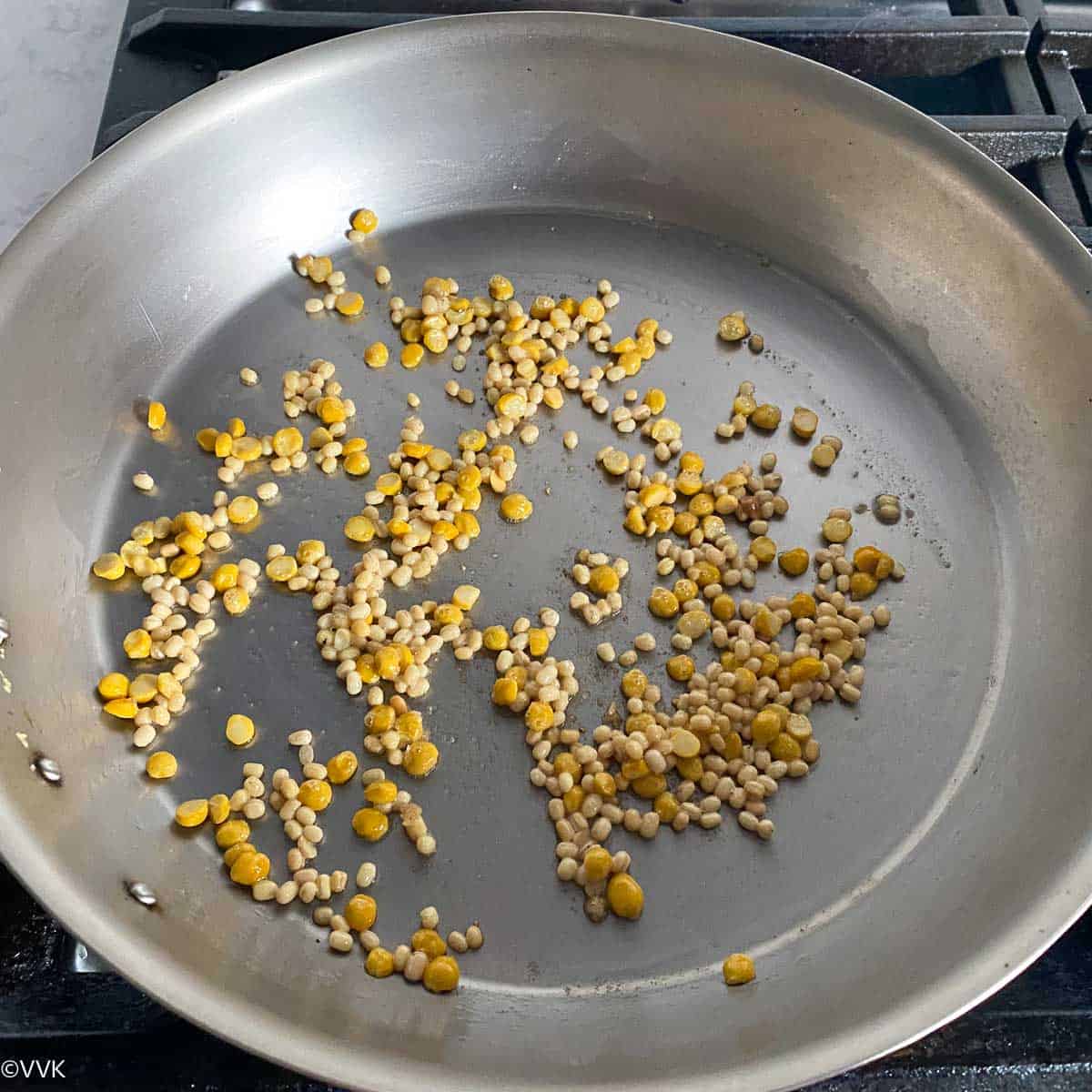
- Transfer the lentils to the mixer jar, and in the same pan, add the red chilies and roast them for a minute or until they become crisp and slightly charred.
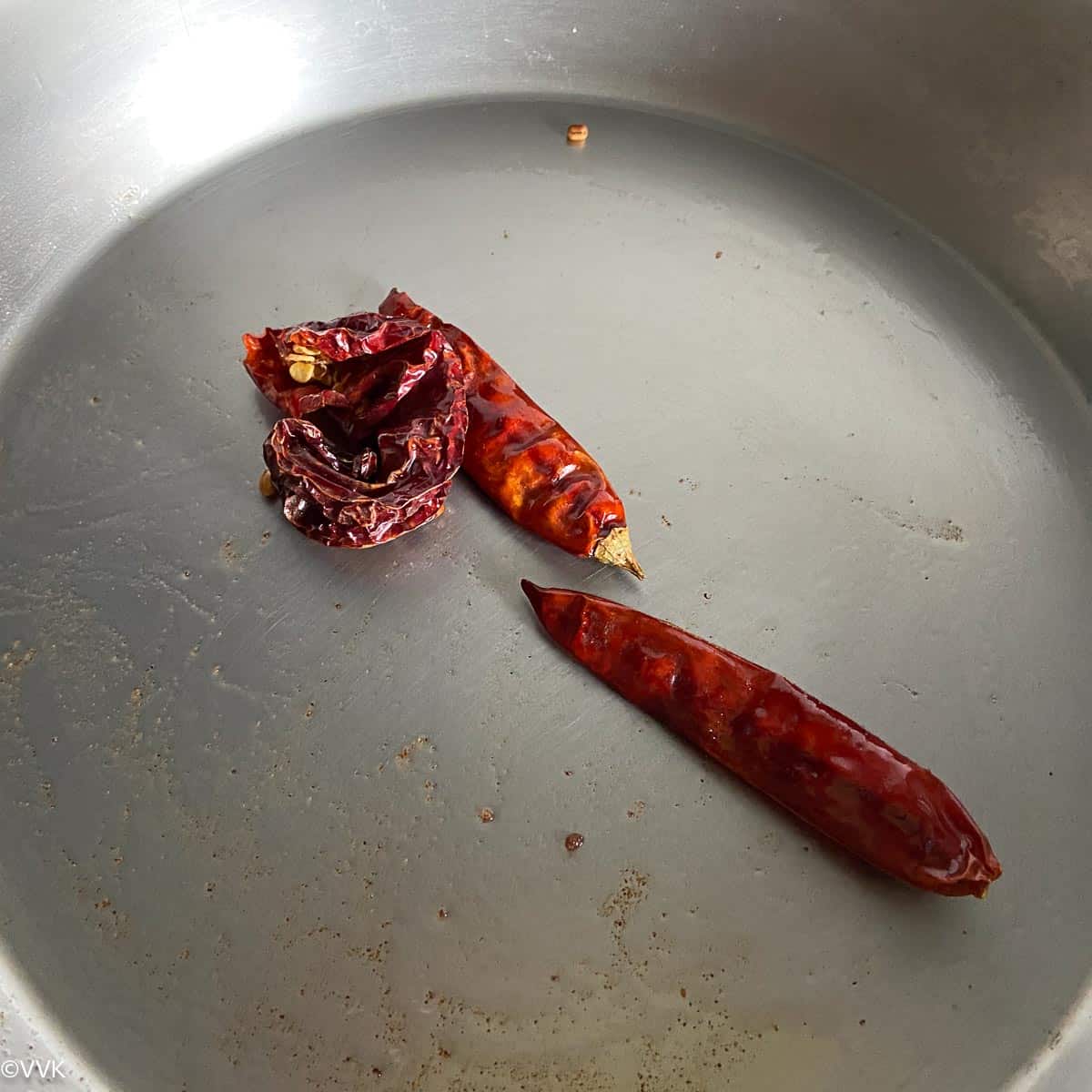
- Transfer the red chilies to the mixer jar as well and let the lentils and chilies cool.
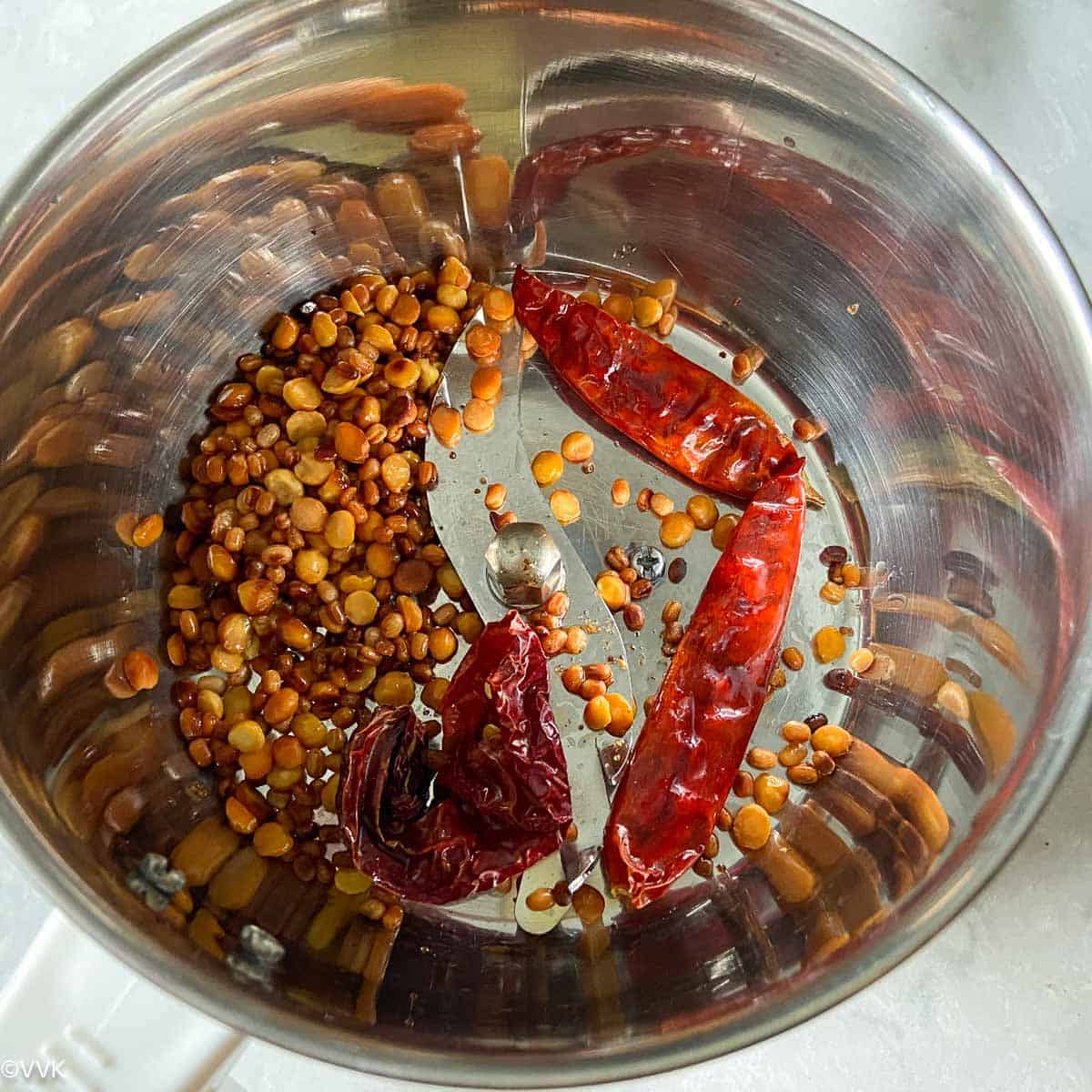
- In the same pan, add ½ more tsp of oil and add the chopped onion and garlic.
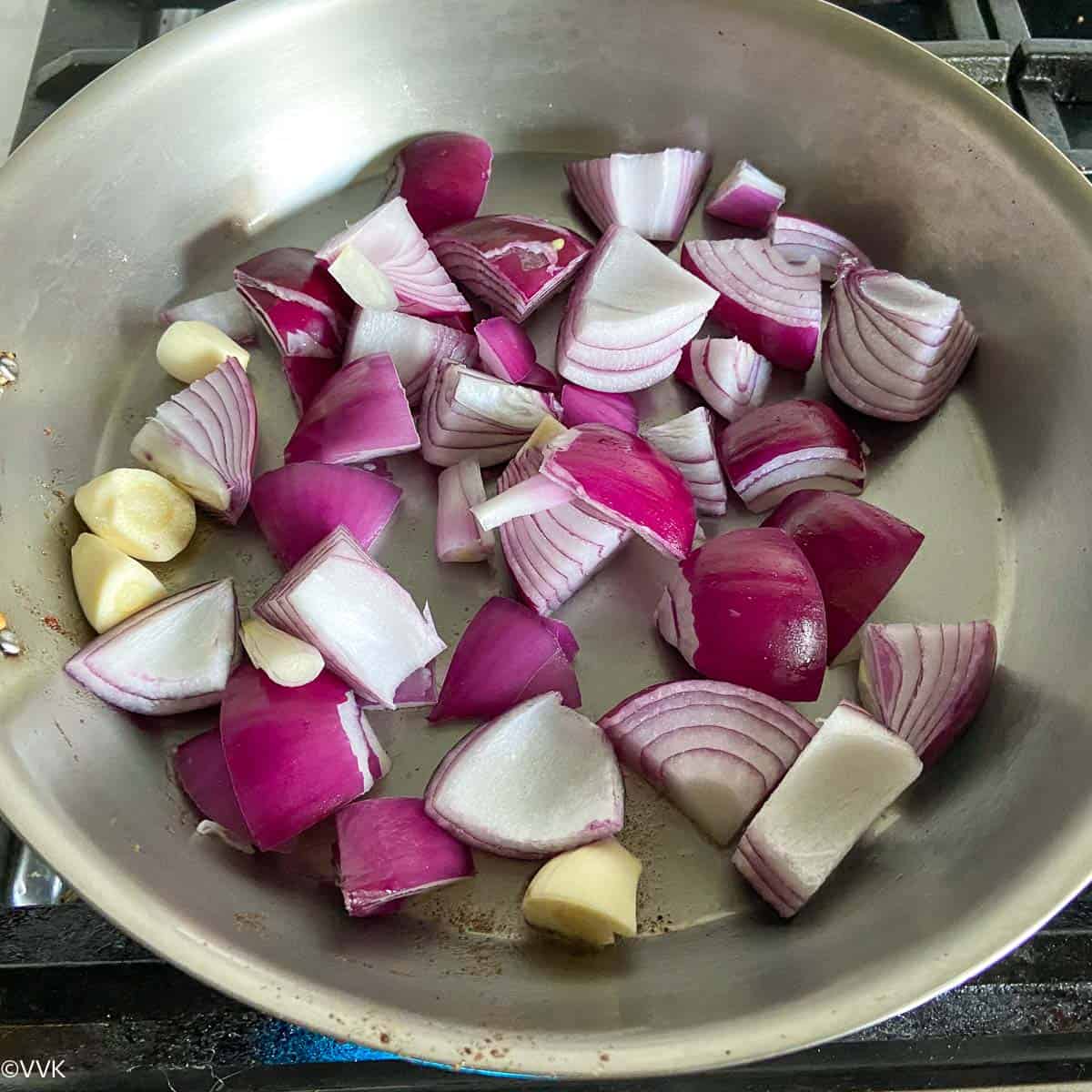
- Saute until the onions are soft or for about 5 to 7 minutes. Transfer the onions to the mixer jar and let it cool.
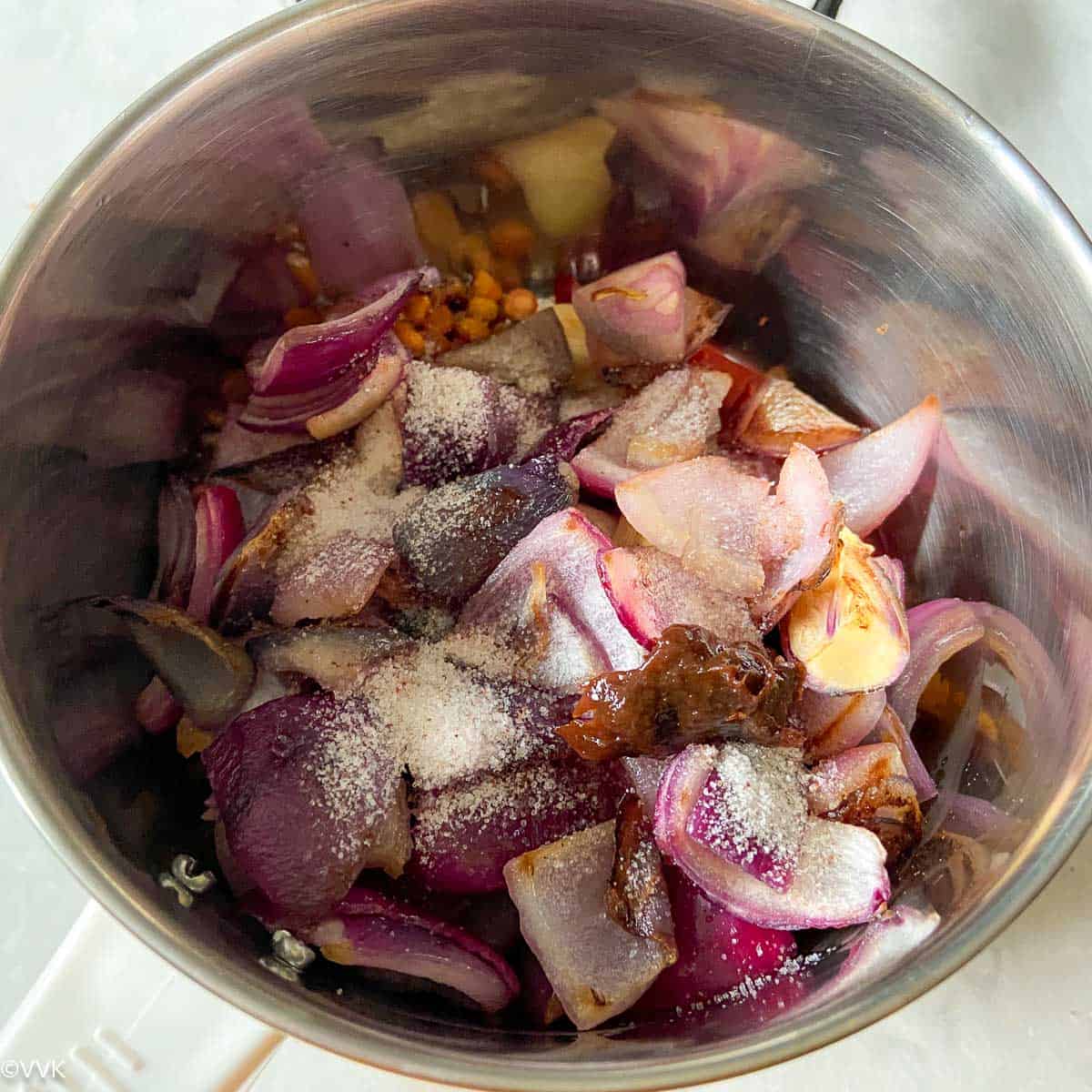
- Now add salt and tamarind paste and grind it using the required amount of water. You might not need the entire ¼ cup of water. So add as required.
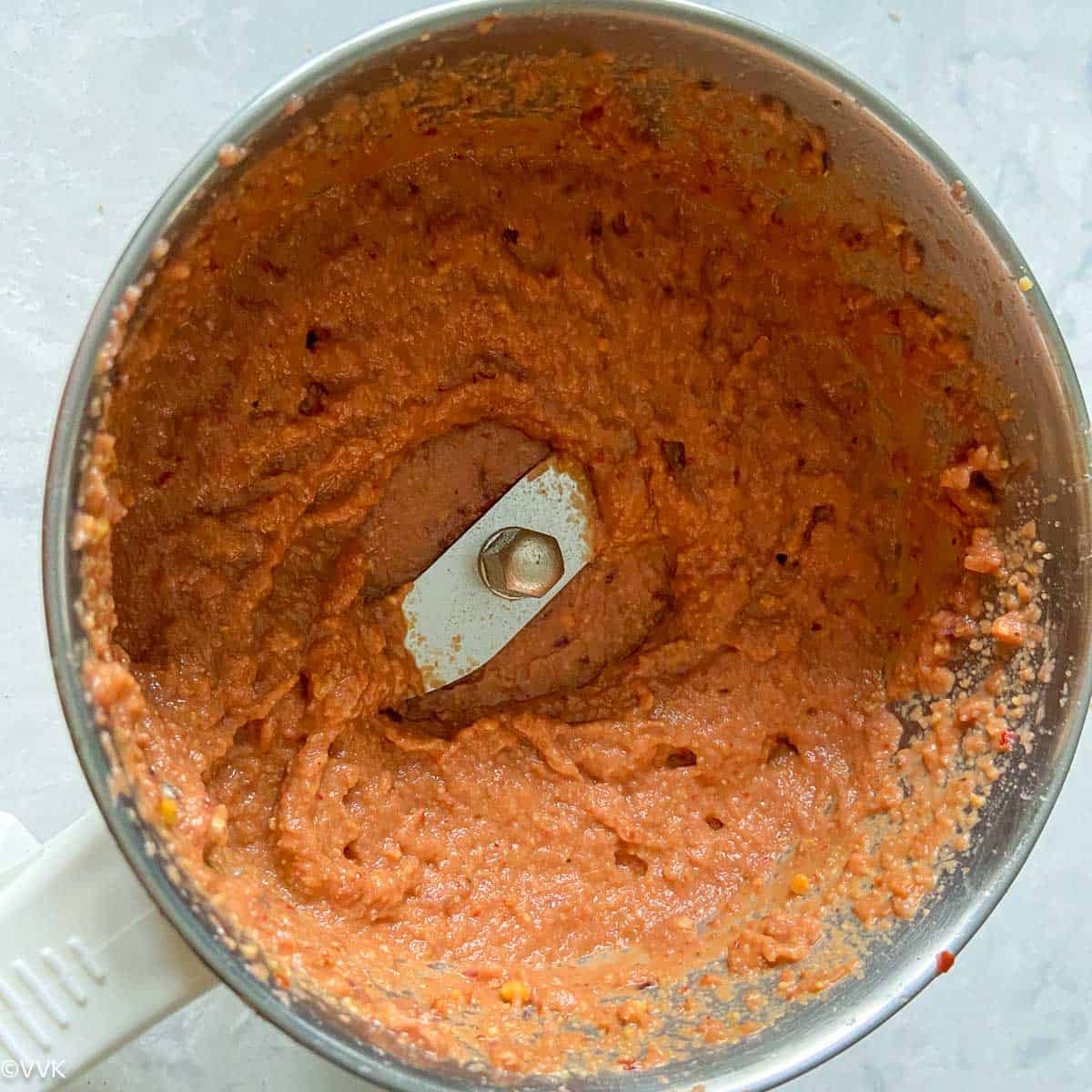
- In a separate tempering pan, heat 1 tsp of oil. When the oil is hot, add the mustard seeds and curry leaves. When the mustard seeds splutter, add this to the chutney. Serve the chutney with idli or dosa. Store it in an air-tight container and refrigerate for longer shelf life and use a clean spoon for every use.
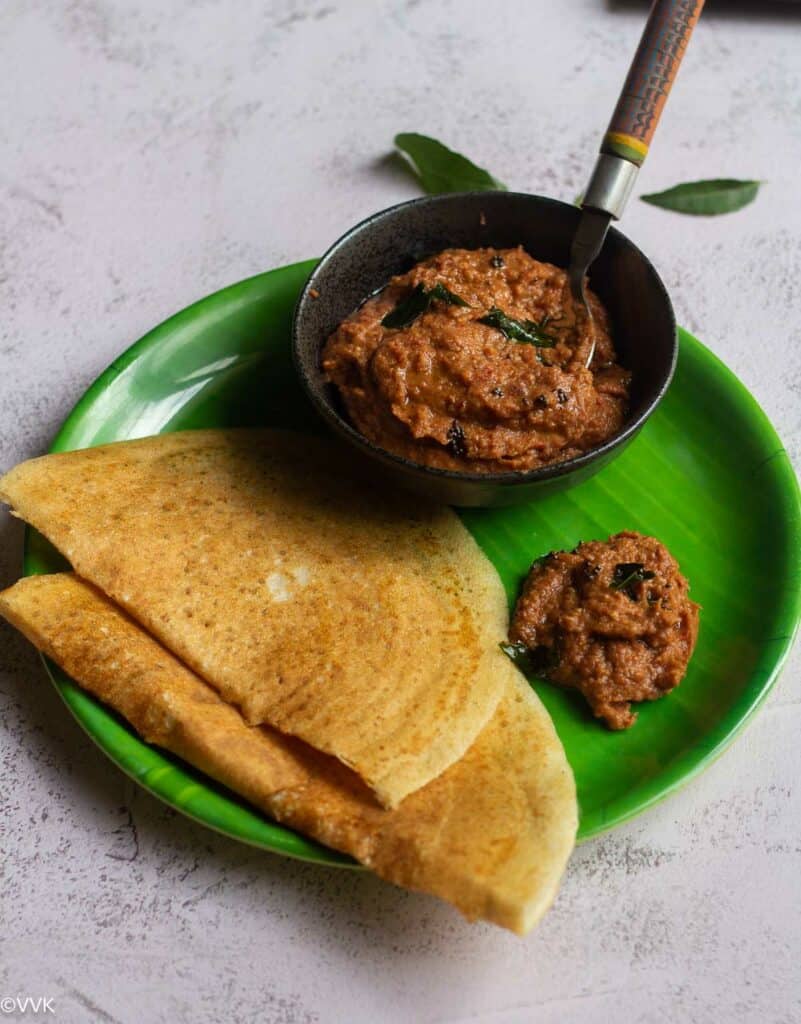
Recipe notes
- As always, adjust the salt and spices as per your preference.
- Reduce the lentils for a thin consistency chutney.
- You can also include a handful of cilantro and curry leaves along with the onion for added flavor. But that will change the color of the chutney.
- I have tried this recipe without garlic as well. Adjust the amount of garlic as per your preference.
More chutney recipes for idli and dosa
Are you looking for similar chutney recipes for idli and dosa? Check out these four chutney recipes below, and don’t miss exploring other recipes here.
Loved this recipe?
If you try this vengaya chutney, please don’t forget to comment and rate this recipe. If you have any questions, please leave a comment, and I will get to it ASAP. Make sure to follow me on my Pinterest or Instagram or join my Facebook Group for recipe updates and simple Indian meal ideas.
📖 Recipe
Onion Chutney | Easy Side Dish for Idli and Dosa
Equipment
- Mixer jar or coffee grinder
Ingredients
Measurement Details: 1 cup = 240ml; 1 tbsp = 15ml; 1 tsp = 5ml;
- 3 tsp oil divided (½ tsp + ½ tsp + 2 tsp)
- 1 tbsp urad dal
- 1 tbsp chana dal
- ¼ tsp asafoetida
- 1 Kashmiri red chili dried
- 2 dried red chili Guntur or other variety
- 2 onions 200 grams peeled and chopped
- 2 garlic cloves 10 grams peeled and chopped
- 1 tsp salt or to taste
- ½ tsp tamarind paste
- ¼ cup water add as required
To Temper
- ½ tsp mustard seeds
- 5 curry leaves
Instructions
- Heat a pan or kadai and add ½ tsp of oil. When the oil is hot, add the urad dal and chana dal along with asafoetida and roast until the lentils are deep golden brown.
- Transfer the lentils to the mixer jar, and in the same pan, add the red chilies and roast them for a minute or until they become crisp and slightly charred.
- Transfer the red chilies to the mixer jar as well and let the lentils and chilies cool.
- In the same pan, add ½ more tsp of oil and add the chopped onion and garlic.
- Saute until the onions are soft or for about 5 to 7 minutes. Transfer the onions to the mixer jar and let it cool.
- Now add salt and tamarind paste and grind it using the required amount of water. You might not need the entire ¼ cup of water. So add as required.
- In a separate tempering pan, heat 1 tsp of oil. When the oil is hot, add the mustard seeds and curry leaves. When the mustard seeds splutter, add this to the chutney. Serve the chutney with idli or dosa. Store it in an air-tight container and refrigerate for longer shelf life and use a clean spoon for every use.
Notes
- As always, adjust the salt and spices as per your preference.
- Reduce the lentils for a thin consistency chutney.
- You can also include a handful of cilantro and curry leaves along with the onion for added flavor. But that will change the color of the chutney.
- I have tried this recipe without garlic as well. Adjust the amount of garlic as per your preference.
Nutrition
I am not a nutritionist. The nutritional information is provided as a courtesy and is an estimate only. It varies depending upon the product types or brands.
Update Notes: This recipe was originally posted in 2009 but now updated with new pictures and recipe cards.


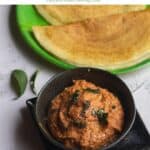
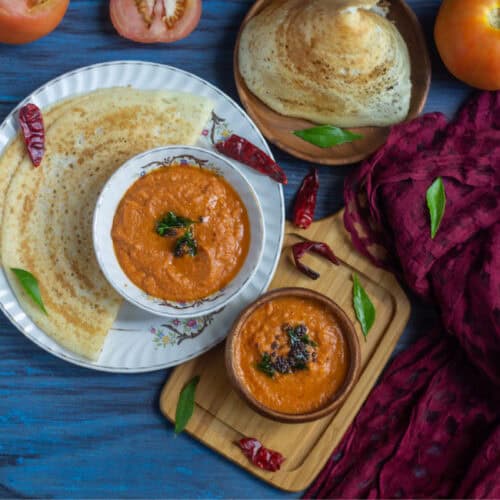
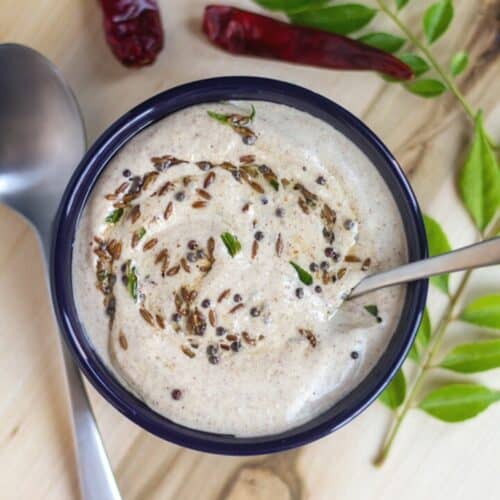
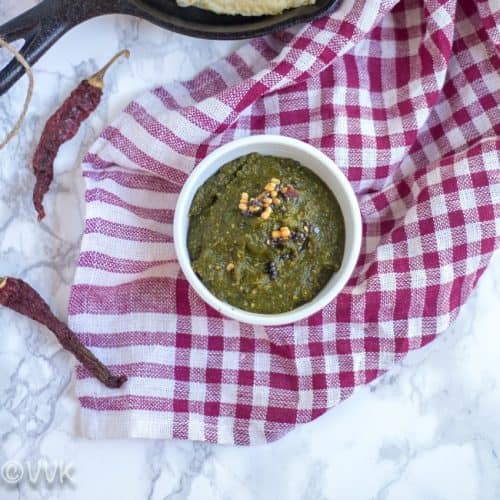
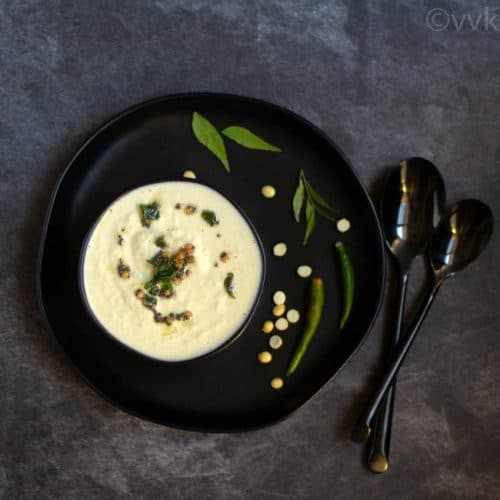
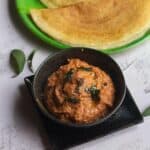
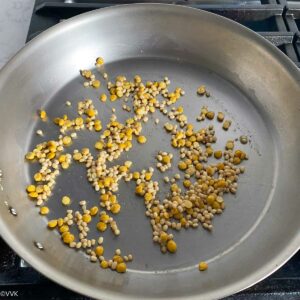
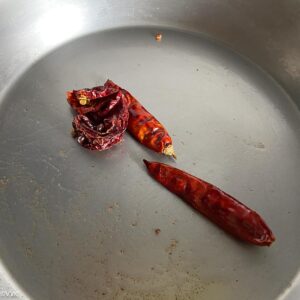
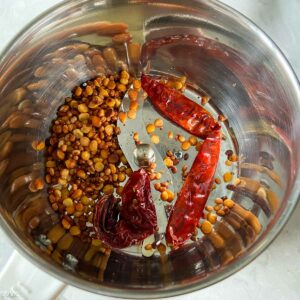
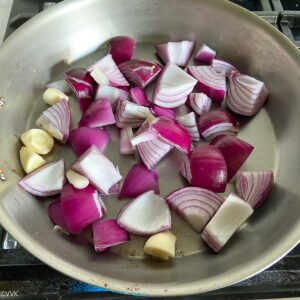
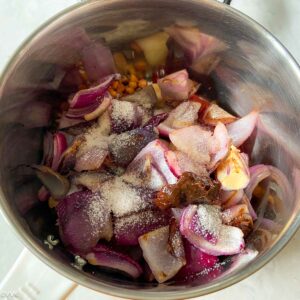
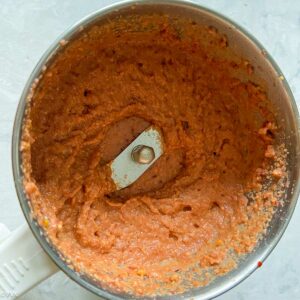
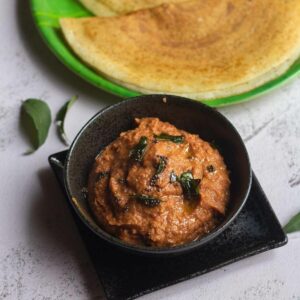

You can add liquid Curd or cheese or white Sauces for better taste in place of chutneys, the carbohydrates during fermentation are scissored through long chain carbohydrate polymer and turn into digestible small chains Sort of malttodextrins.And pulses add a protein part making it a whole and complete food for body,one can add various vegetables to make it still nutritious and why not use such combination to popularize such preparations.
Love your simple preparations, but add innovations please.
Good recipe. Easy to make and tasty. The only con is if you use pulses, it’s thick and tastes “carbohydraty” (for lack of better word) so the pairing with another “carbohydraty” dish (like idli and dosa) tastes a slight bit off. Next time I make, I might be better off not adding the second Dal.
I always make chutneys in way that I can pair it with idli/dosa and rice too. You can find other chutneys in my blog without lentils. Thanks.
South Indian vegetarian cuisine is a balanced one. Most of the protein comes from lentils. Dosa/idli batter has a portion of lentils. And these are eaten with chutney and sambar, again which has lentils. We can’t call these “ carbohydraty”, for lack of better word. These are combinations that have worked well since ages and will continue to be loved.
Of course, it is a personal choice whether you want to add lentils to your chutney or not.
A very good recipe, Srividhya!